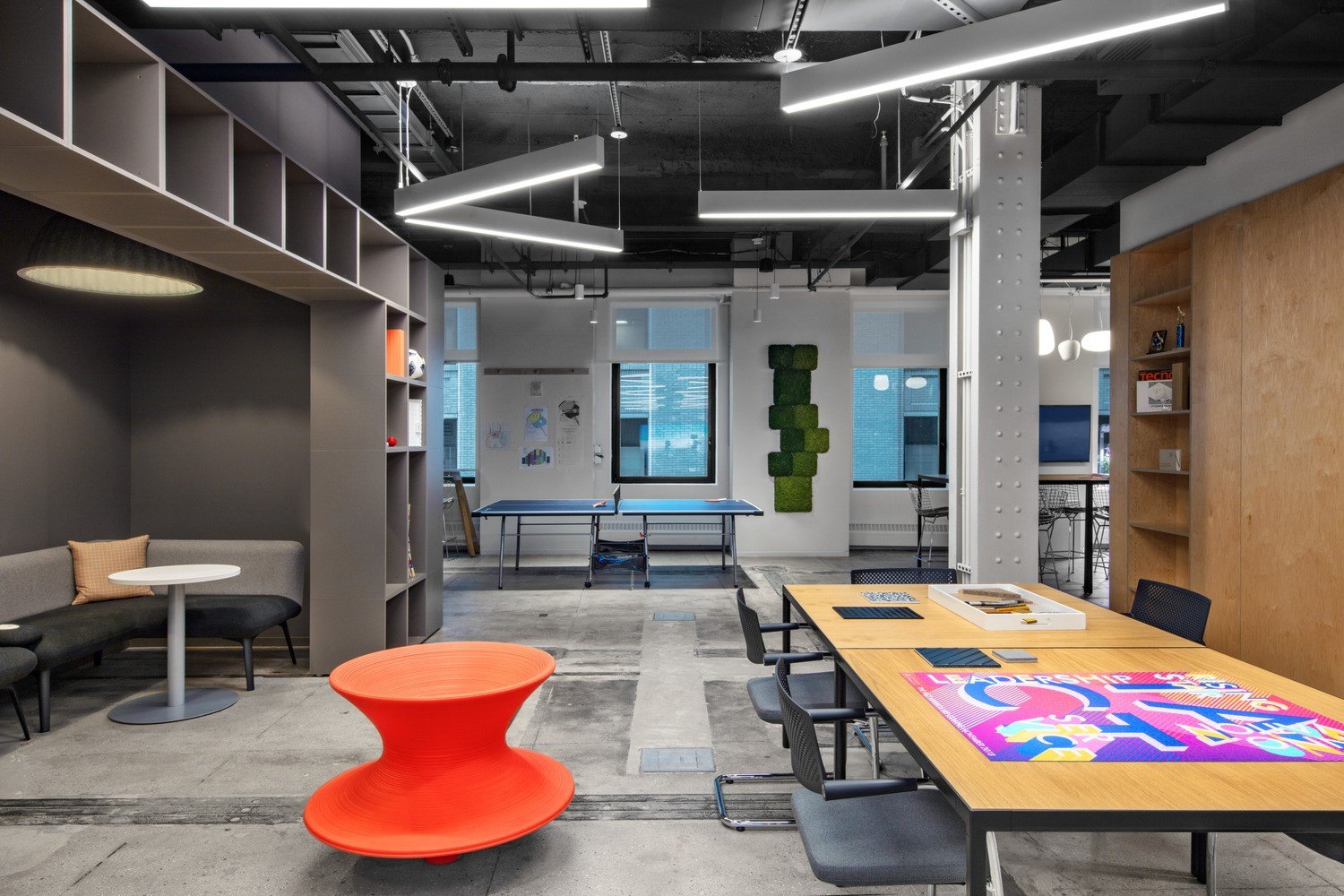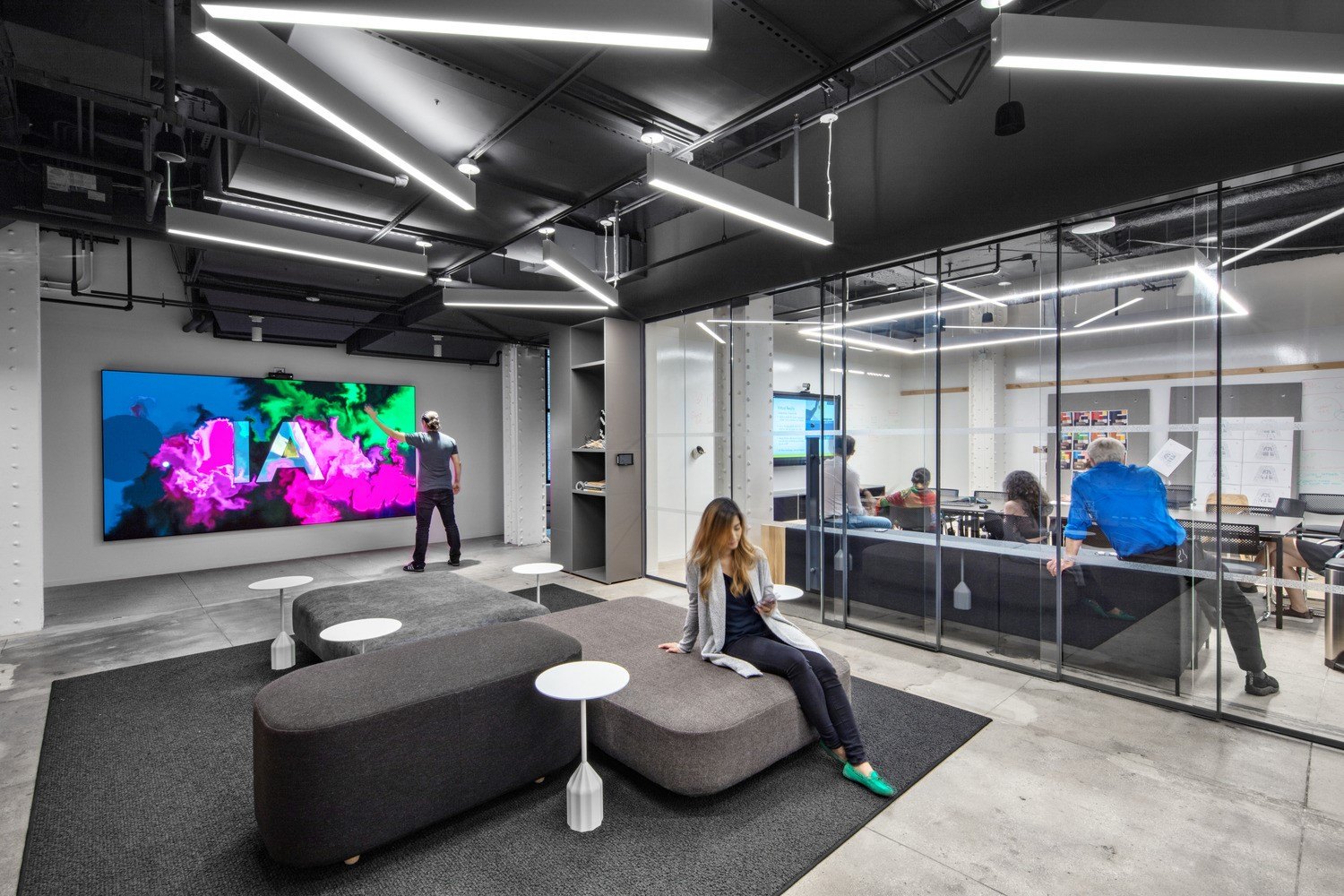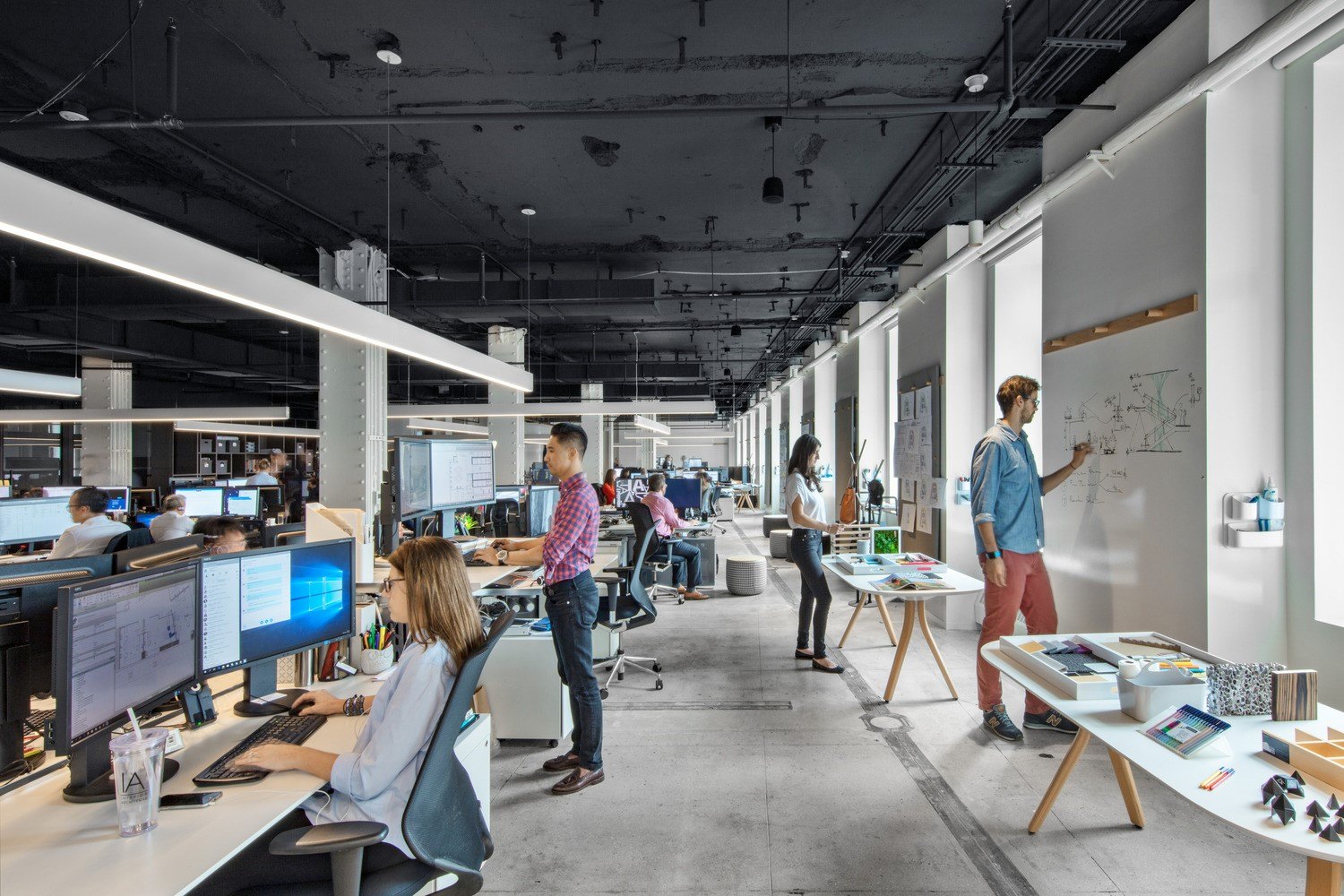In a move driven by growth, IA’s New York office has relocated to 100 Broadway, a landmark skyscraper dating back to 1894, in the heart of the city’s financial district. The design of the new workspace takes full advantage of the site’s original neoclassical architecture by exposing original elements, including remnants of the original mosaic tile floor. But the overall look and feel of the new space is unmistakably contemporary and minimalist with an industrial feel, monotone palette, and open plan geared for flexibility and creativity. Metal mesh walls, a custom reception desk of stacked and angled plywood and conference rooms that convert from two to one or open to a larger flexible area are a few of the features.
Conference rooms convert from two to one or open to a larger flexible area. Photography © Eric Laignel.
Design elements connect the new space to its financial district neighborhood. Since the new location marks the halfway point on the New York ticker-tape parade route, the graphic band on conference room glass walls is a ticker tape with a hidden message referencing IA’s core values. And all of the conference rooms are named after Alexander Hamilton and his family, who rest in peace across the street in the graveyard at Trinity Church. Overall, the design intent is to create a neutral backdrop for the inspired work of the design team, a creative lab for experimentation and the generation of thought leadership and research, as well as a venue for client events.
The space is planned to showcase how IA works internally, as well as with consultants and clients. Photography © Eric Laignel.
A Hackable Studio Showcase
The fully hackable studio lends itself easily to welcoming guests and to social events, providing multiple options and seating arrangements for creative interaction and solo work. Sit-stand desks, long work tables, writeable walls, and alcoves for conversation or respite are all part of the mix, as are conference rooms with state-of-the-art technology, phone rooms, a library with a light lab, and an eat-in pantry. Since process, ideation, and collaboration are at the core of the business of design, the space is planned to showcase how IA works internally, as well as with consultants and clients, and supports both digital and analog forms of collaboration.
A peg system throughout the office enables teams to transfer tackable project boards from desks to meeting rooms. This, along with walls covered with writeable surfaces, promotes more collaborative meetings with ideation at an arm’s length. Studio Leader and Principal Erik Hodgetts says, “The mobile, tackable panels allow us to take the contents of a brainstorming session or collaborative meeting right back to our own work neighborhoods so we can preserve and develop these ideas as we do our individual tasks. Alternatively, we can create tools like large-format calendars that a project manager can keep updated, then bring it right into the team meeting to share with the group.”





